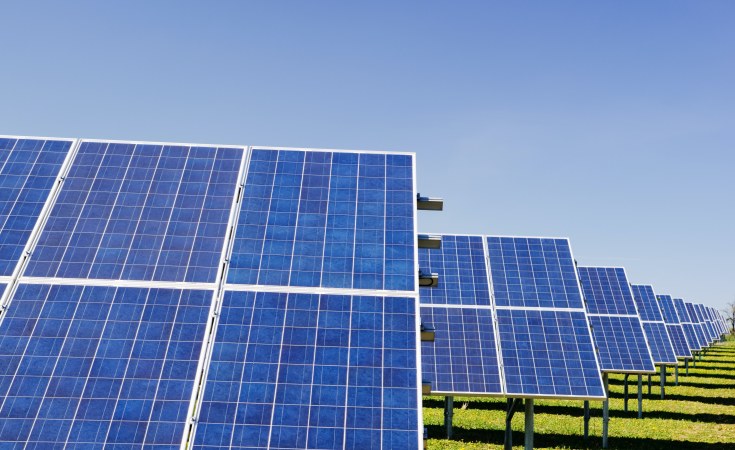There's no one-size-fits-all with sustainable economies. A just transition on the continent will look very different to one in the Global North.
While the concept of a "just transition" originated in the trade union movement, articulating the need to support workers who lose their jobs due to environmental policies, it has since come to refer to something much broader. Today, the idea of a just transition refers to society-wide efforts to invest in sustainable, inclusive, and climate-resilient economies.
What that looks like in different places varies widely. A just transition in Australia (with its many coal mines) will not be the same as in Angola (with its vast oil production) or the Netherlands (with its intensive livestock farms). The just transition is a universal agenda with localised practice.
This provides an opportunity for Africa if it can take the concept and make it its own. After all, beyond a set of principles to achieve climate and social justice, there is no widely accepted definition of what a just transition encompasses.
Among developed countries and major emerging economies, the concept centres on moving away from fossil fuels. In South Africa, the first country on the continent to agree a Just Energy Transition finance package with donor countries, a just transition has been defined as an acceleration away from coal and towards clean energy. But for most of Africa - which accounts for a tiny fraction of global carbon emissions and where 600 million still lack access to electricity - the idea will mean something very different.
Africa must decide what.
An African just transition
International investors are increasingly seeking opportunities to fund just transition programmes in Africa. But most don't know what such initiatives look like nor what metrics to use to measure their success. By developing a shared understanding of what a just transition means for Africa, the continent can spur greater action and funding to support its transformation.
To help bridge this gap, the African Development Bank in 2021 launched a consultation with a range of African stakeholders to build consensus around a framework for how to define just transitions on the continent. The exercise was the first of its kind and opened a space to Africanise discussions about what makes low-carbon development inclusive.
This process, and others, make clear that there is no one-size-fits-all when it comes to designing sustainable economies. Governments must hold their own national discussions about ways forward. However, there are some common principles all nations can draw on.
First, an African just transition must maximise sustainable development. Whereas in the Global North where just transitions are largely about mitigating negative socioeconomic impacts of climate action, the priorities for transitions in Africa ought to be on eliminating energy poverty, growing economies, strengthening institutions, and supporting new industries with appropriately skilled workforces. South Africa's rigorous consultation process provides a model and reference point for how other countries can grapple with difficult questions and design their own plans with these goals in mind.
Secondly, the pace of transformation must consider the economic context of individual countries, some of which are heavily dependent on carbon-intensive industries and some of which are not. All countries will need to diversify their economies, but their challenges will differ significantly. The right plan for, say, Madagascar or Kenya will be very different to that for, say, oil-dependent Angola or Nigeria, whose transformation won't be easy without a global transition away from fossil fuels.
Thirdly, financing country-tailored transitions will require creativity. On this, the continent now has two countries to watch closely. South Africa's Just Energy Transition Partnership (JETP) will be supported by donors who agreed to mobilise $8.5 billion, overwhelming in the form of loans, alongside some grants and credit guarantees. Meanwhile, Senegal recently agreed a similar $2.7 billion partnership. The West African nation is the smallest economy to have signed off on a JETP that it hopes will help accelerate the deployment of wind and solar, with a goal for renewables to account for 40% of its electricity mix by 2030.
While most African countries won't benefit from a multi-billion-dollar transition partnership, South Africa and Senegal's process of bringing countries and international funders to the table provides a model that could be replicated across the continent.
African countries, however, will also need to look elsewhere to realise the necessary funds. Increasing climate finance for adaptation and resilience would make a huge difference to governments' balance sheets. African countries are currently spending billions of dollars a year coping with climate impacts, diverting investments away from critical social infrastructure such as healthcare and long-term sustainable investments. Moreover, with 22 African countries identified by the IMF as being either in or at high risk of debt distress, addressing the continent's debt issue is necessary to create the fiscal space for transitions.
Owning the debate
Africa's discussion on just transitions is just getting started. Thinkers, practitioners, and policymakers across the continent must continue to come together to share experiences and create peer-to-peer learning.
Given Africa's diversity and distinct energy and development needs, the continent will need bespoke approaches to transforming into climate-resilient societies. These must be grounded in economic realities, consider countries' small contribution to climate change, and strengthen the links between climate and development.
Africans have much to contribute to the global discussion on transitioning to clean and inclusive economies. But first, they must adopt the idea of "just transition" as an African issue.
Laura Becerra is a senior consultant at Neyen. Saliem Fakir is the executive director of the African Climate Foundation.


